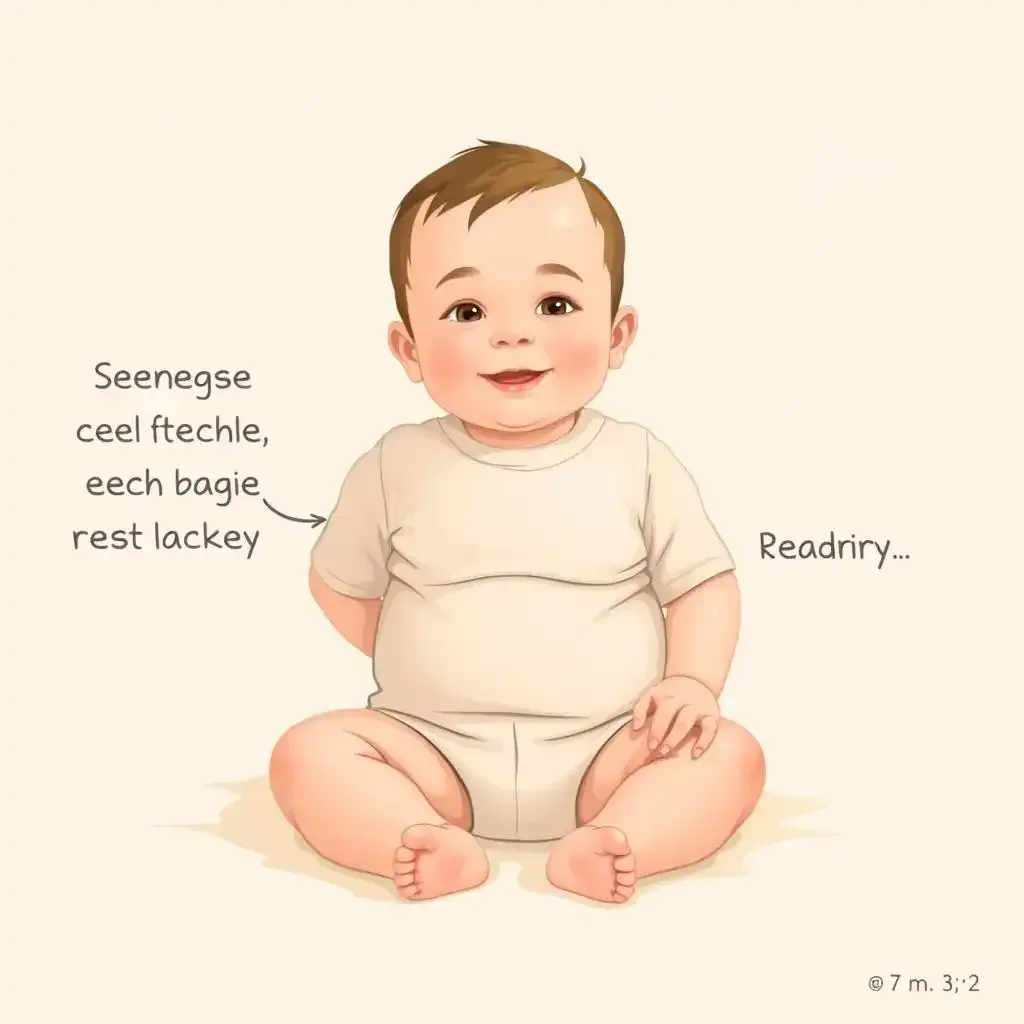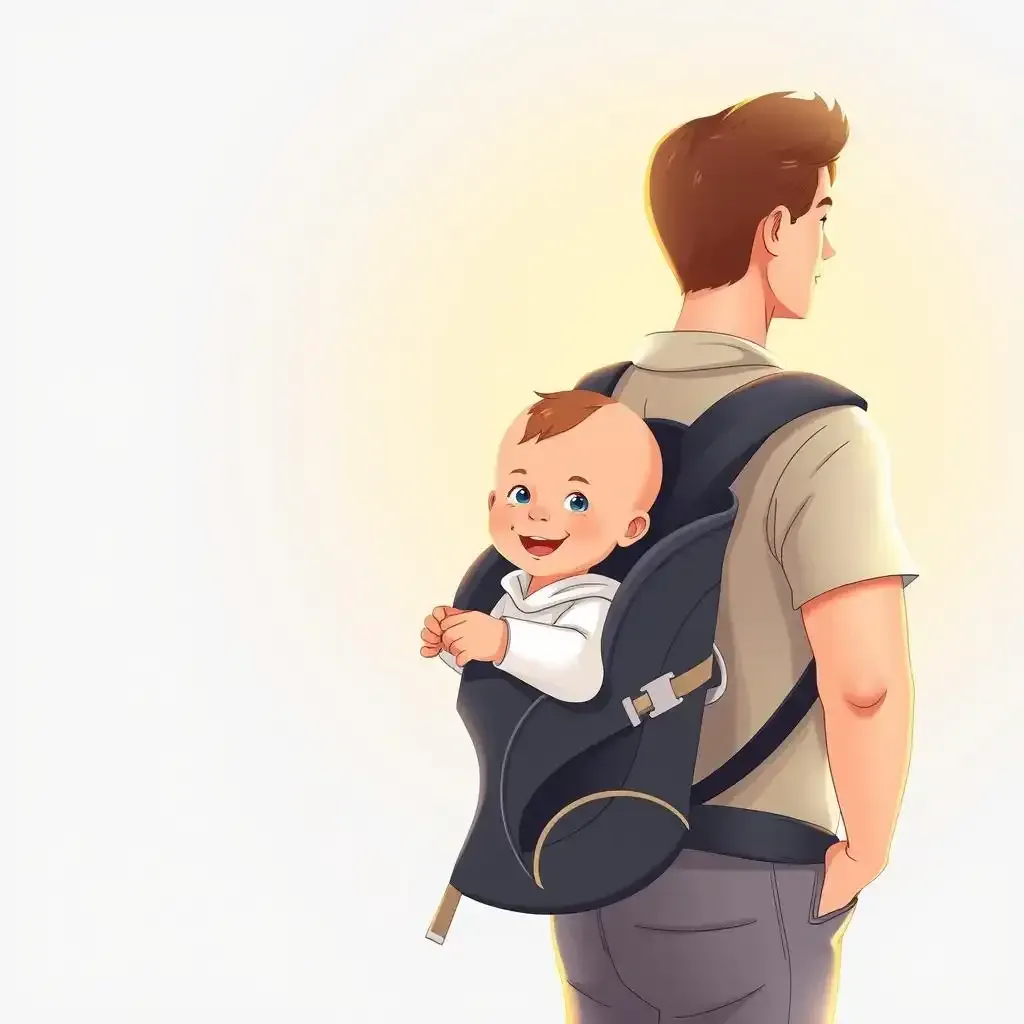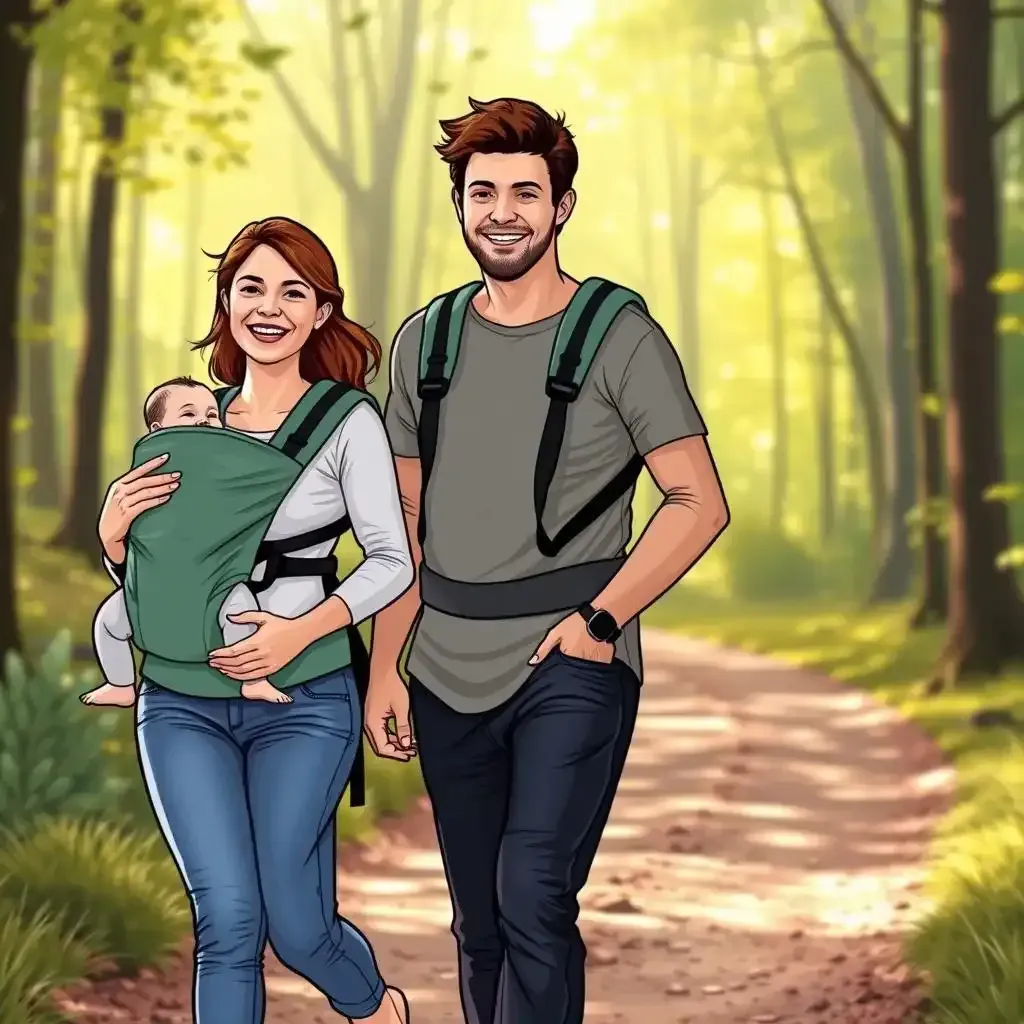Table of Contents
So, you're thinking about strapping your little bundle of joy into a backpack carrier and hitting the trails (or just the grocery store)? That's fantastic! Backpack carriers offer a fantastic way to keep your baby close while you're on the go. But before you start on this experience, there's a crucial question to answer: when can baby go in a backpack carrier? It's not just about convenience; it's about your baby's safety and comfort. This comprehensive guide from babyshop123.vn will explore the ideal age, the importance of proper development, choosing the right carrier, and essential safety precautions. We'll also look at alternatives and when it might be time to move on to other methods of carrying your little one. Get ready to learn everything you need to know to make informed decisions about using a backpack carrier with your precious cargo!
Factor | Recommendation |
|---|---|
Age | Generally 6 months or older, when they can sit unsupported |
Developmental Milestone | Able to hold their head up steadily and sit upright without assistance |
Carrier Type | Choose a carrier designed for infants, with proper head and neck support |
Weight and Height | Check the carrier's weight and height limits; ensure your baby falls within the recommended range. |
Safety Checks | Always secure all straps and buckles before use. Regularly check for wear and tear. |
Short Trips Initially | Start with shorter carrying sessions to see how your baby reacts. |
Supervision | Never leave your baby unattended in the carrier. |
Alternatives | Consider other options like slings or wraps for younger babies. |
When Can Baby Go in Backpack Carrier: The Six-Month Rule
When Can Baby Go In Backpack Carrier The Six Month Rule
Okay, so you're picturing yourself, all outdoorsy and adventurous, with your little one snuggled in a backpack carrier. Sounds idyllic, right? But there's a magic number here: six months. That's generally when most experts say it's okay to pop your baby in a carrier. Why six months? Well, it's all about their necks and spines. Before six months, their little bodies are still developing, their necks aren't strong enough to support their heads properly, and their spines aren't ready for the extra weight and jostling. Think of it like this: you wouldn't expect a newborn giraffe to run a marathon, would you? Same principle applies here. We're talking about proper support and development. Giving your baby time is key. Plus, most carriers have a minimum age recommendation, and ignoring that is, well, not very smart.
Age (Months) | Developmental Milestone | Carrier Suitability |
|---|---|---|
0-5 | Neck and spine still developing | Generally not recommended |
6+ | Can sit unsupported, head control improved | Suitable, but always check carrier instructions |
I remember when my niece was little. My sister tried to use a carrier too early, and let's just say it wasn't pretty. The little one was uncomfortable, and my sister ended up with a crick in her neck! It was a learning experience for everyone involved. The point is, rushing things can lead to discomfort and even injury for both parent and child. It's a bit like trying to bake a cake before the oven's preheated – it's just not going to turn out well. Patience is key. And always, always, check your carrier's instructions. Manufacturers aren't just being fussy; they're looking out for your little one's safety.
- Check the manufacturer's recommended age and weight limits.
- Ensure your baby can sit up unsupported for at least 15-20 minutes.
- Start with short carrying periods to gauge your baby's comfort level.
“A baby’s development is unique. What’s right for one might not be right for another.” - Dr. Anya Sharma (Pediatrician)
There are tons of different carriers out there – some are designed for newborns, others for older babies, and some even for toddlers! Choosing the right one is super important. Look for features like adjustable straps, good head support, and a comfortable fit for you. Imagine trying to carry a heavy backpack with straps that dig into your shoulders – not fun, right? Finding a carrier that fits both you and your baby properly is essential for a happy, safe carrying experience for everyone involved. It’s like finding the perfect pair of shoes – you don't want something that's too tight or too loose! You want something that’s comfortable and supportive.
"Remember, every baby develops at their own pace. There's no rush!" - Anonymous Parent
Baby's Development and Backpack Carriers: Sitting Up Straight
Babys Development And Backpack Carriers Sitting Up Straight
So, we've talked about the six-month rule, but it's not just about hitting that magical age. It's about your little one's *ability* to sit up straight without wobbling like a jelly. Imagine trying to carry a stack of wobbly pancakes – disaster, right? A baby who can't support their own head and neck is going to be super uncomfortable, and frankly, it's not safe. They need that core strength, that neck stability, to handle the jiggling and bouncing of a backpack carrier. Think of it like building a tower out of blocks; you need a solid base before you add more layers. Similarly, your baby needs a solid foundation of neck and back strength before they can comfortably handle a backpack carrier.
- Look for signs your baby can sit up unsupported for a decent amount of time (at least 15-20 minutes).
- Observe how they hold their head. Is it steady, or does it flop around?
- Try some tummy time – it helps strengthen those crucial neck and back muscles.
I remember my friend Sarah. She was so excited to use her fancy new backpack carrier, but her little one was only four months old. Let's just say the experience wasn't exactly a walk in the park. Her baby was constantly slumping over, and Sarah ended up with a sore back and an unhappy baby. It was a valuable lesson learned. They waited a couple of more months and then tried again. This time, it was a completely different story. Her baby was sitting up tall and proud, happily gazing at the world around them. It was a win-win for both mom and baby!
Milestone | Description | Relevance to Backpack Carriers |
|---|---|---|
Head Control | Can hold head steady without support | Essential for safety and comfort |
Sitting Unsupported | Can sit upright without assistance | Indicates sufficient core strength |
Weight | Meets minimum weight requirements of the carrier | Crucial for proper support and distribution |
“Don't rush the process! Your baby's development is unique. Their readiness for a backpack carrier is a sign of their overall strength and development.” - Dr. Emily Carter (Pediatrician)
Now, I know what you might be thinking: "But my baby is almost six months old, and they *still* can't sit up perfectly." That's perfectly normal! Some babies develop at different paces. If you have any concerns, always chat with your pediatrician. They're the experts and can give you personalized advice. Don't compare your little one to others; every baby is unique, like a snowflake, and will reach these milestones at their own speed. This is not a race. Don’t feel pressured to rush things. Take your time and enjoy the progression!
"Patience is a virtue, especially when it comes to your little one's development!" - Anonymous Parent
Choosing the Right Backpack Carrier: Size Matters
Picking the right backpack carrier is like choosing the perfect pair of shoes – you wouldn't wear hiking boots to a fancy dinner, would you? It's all about finding the right fit for both you and your little one. A carrier that's too small will be uncomfortable and potentially unsafe, cramping your baby's style and making them grumpy. Too big, and your baby might get lost in it, like a peanut in a giant sandbox! Read the instructions carefully! They aren't just there to annoy you; they're your safety guide!
- Check the weight and height limits. These aren't suggestions; they're rules! Manufacturers aren't trying to be meanies; they're just trying to keep your little one safe.
- Look at the size of the seat. Does it look roomy enough for your baby to sit comfortably with their legs bent at a 90-degree angle? Think "happy frog legs," not "dangling sausages."
- Consider the adjustability. Can you easily adjust the straps to fit both your body and your growing baby? A good carrier grows with your baby, like a magic beanstalk.
I once saw a friend trying to cram her six-month-old into a carrier clearly meant for a toddler. It was a comedy of errors – straps everywhere, the baby looking utterly miserable. She finally gave up, and they both ended up taking a taxi home. It was hilarious (for me!) and a great reminder that choosing the right size is crucial. Don't be afraid to try on different carriers to find one that's just right. And remember, a happy baby equals a happy parent!
Carrier Feature | Importance | What to Look For |
|---|---|---|
Weight Limit | Ensures baby's safety and comfort | Check manufacturer's specifications |
Seat Size | Provides proper support and leg position | Roomy enough for bent knees, not dangling legs |
Adjustability | Allows for a comfortable fit for both parent and baby | Adjustable straps and buckles |
"A well-fitting carrier is like a comfy hug for both you and your baby!" - Experienced Parent
Remember, you’re not just carrying your baby; you’re carrying your precious cargo. Think of it like this: would you put expensive china in a flimsy cardboard box? No way! You'd use something sturdy and protective. Your baby deserves the same kind of care. A good-quality, well-fitting carrier is an investment in both your comfort and your baby's safety. It's like buying a really good bouncy castle – worth every penny!
"Don't skimp on safety! Invest in a carrier that meets your needs and your baby's." - Parenting Expert
When Can Baby Go in Backpack Carrier: Safety First!
When Can Baby Go In Backpack Carrier Safety First
Checking the Carrier and Yourself
Safety first! That's my motto, and it should be yours too when it comes to baby carriers. Before even *thinking* about popping your little one in, give your chosen carrier a thorough once-over. Are the straps secure? Are there any loose threads or broken buckles? Imagine a wobbly chair – not something you want your precious cargo perched on, right? A well-maintained carrier is like a sturdy tree, providing reliable support. I've seen carriers with frayed straps – yikes! Always check for wear and tear. It's like checking your bike before a long ride—you wouldn't want a flat tire halfway through, would you? And don't forget about *you*! Make sure you're comfortable wearing the carrier. If you're hunched over and struggling, it's not a good setup. It's a bit like trying to carry a heavy suitcase with a broken handle – awkward and painful.
- Inspect all straps and buckles for damage.
- Ensure the carrier fits you comfortably.
- Practice putting the carrier on and taking it off before using it with your baby.
Baby's Comfort and Your Awareness
Once you've got the carrier all set, it's time to focus on your little one. Remember, this isn't a race. Start with short trips and keep a close eye on your baby's reactions. Are they happy and content, or are they fussy and uncomfortable? It's like testing the waters before you examine in headfirst. If they seem unhappy, take a break. Don't push it. And while your baby's in the carrier, be extra aware of your surroundings. Avoid uneven terrain or crowded areas, especially when your little one is still getting used to the experience. It’s like navigating a busy street – you wouldn't run across it blindly, would you? Stay alert and keep your baby safe. It's all about finding a balance between exploration and caution. Think of it as a gentle introduction to the world, one comfortable step at a time.
Sign | Meaning | Action |
|---|---|---|
Fussiness | Baby is uncomfortable | Remove from carrier, check position, take a break |
Slouching | Poor support | Adjust straps, check carrier fit |
Overheating | Too warm | Remove from carrier, cool down |
"Always err on the side of caution. Your baby's comfort and safety are paramount." - Experienced Parent
Final Thought
Ultimately, deciding when your baby is ready for a backpack carrier is a personal decision. Always prioritize your baby's safety and comfort. Remember to check the manufacturer's guidelines, observe your baby's developmental milestones, and use common sense. With careful consideration and the right preparation, you and your little one can enjoy many happy adventures together, carried close in your trusty backpack carrier.
